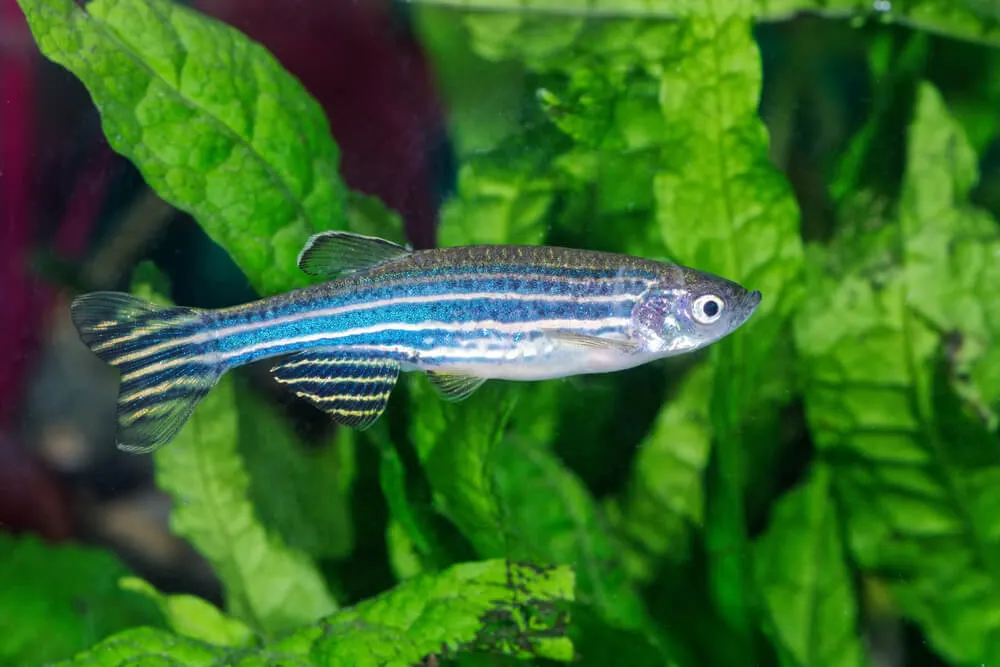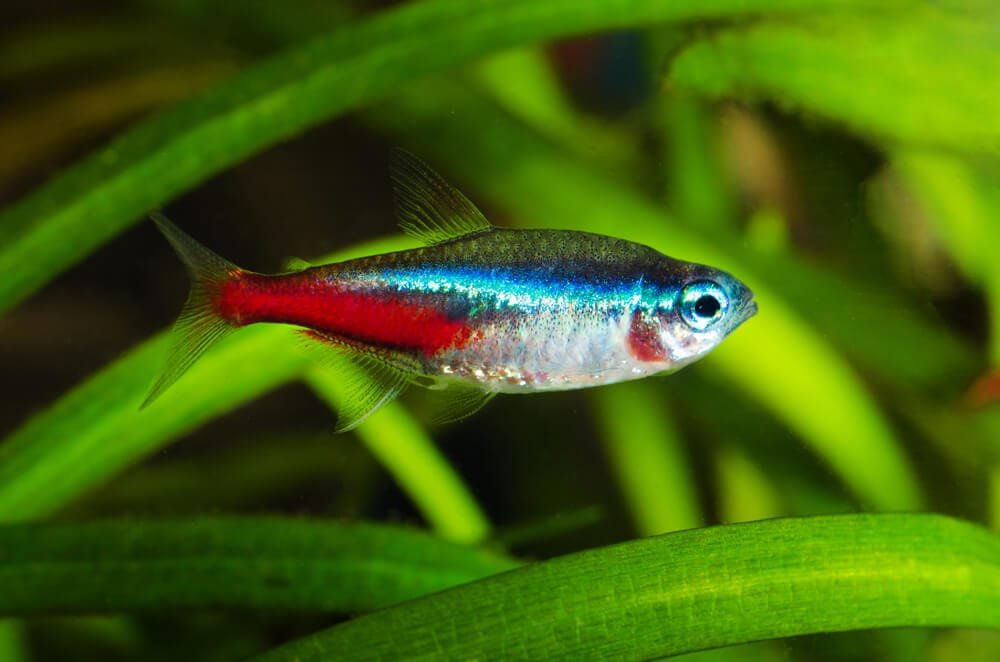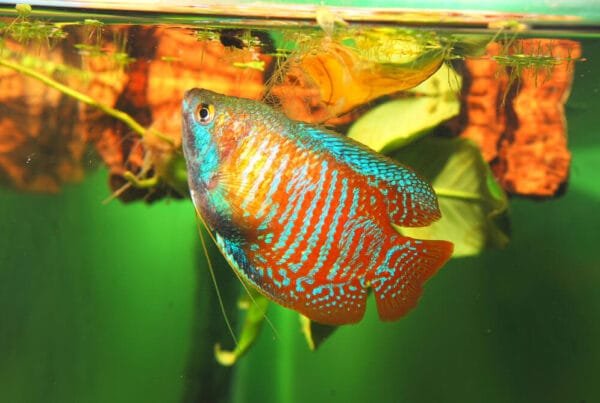You’re about to discover the fascinating world of the Zebra Danio, a small freshwater fish native to South Asia. With its eye-catching stripes resembling a zebra, this elegant creature brings a touch of vibrancy to any aquarium. Known for its sociable nature and ease of care, the Zebra Danio is not only a popular choice amongst aquarium enthusiasts but also a perfect fit for beginners. Let’s dive into the life of the Zebra Danio and uncover its unique characteristics and how to best care for this delightful species.
Physical Description
Coloration
The Zebra Danio is a beautiful freshwater fish known for its striking stripes. Its body is covered in horizontal black and white stripes that run from head to tail, resembling the pattern of a zebra hence its name. The black stripes are bold and crisp, contrasting against the pearly white background. This coloration makes the Zebra Danio a visually captivating addition to any aquarium.
Body Shape
The Zebra Danio has a slender and elongated body, typical of many small schooling fish. Its streamlined shape allows it to swim swiftly and gracefully through the water. The fins are transparent and delicate, adding to the overall elegance of the fish. With its small mouth, the Zebra Danio is well-adapted for feeding on tiny food particles found in its natural habitat.
Size
In terms of size, the Zebra Danio is quite small, making it suitable for a wide range of aquarium sizes. On average, adult Zebra Danios grow to be around 2 inches (5 cm) in length. Female Zebra Danios tend to be slightly larger and plumper than their male counterparts.
Natural Habitat
Geographical Range
The Zebra Danio is native to several countries in Southeast Asia, including Bangladesh, India, Nepal, and Pakistan. Within these countries, it inhabits freshwater rivers, streams, and rice paddies.
Ideal Conditions
Zebra Danios thrive in tropical environments with temperatures ranging from 64°F to 82°F (18°C to 28°C). They prefer water with a slightly alkaline to neutral pH level, typically around 7.0 to 8.0. Additionally, they require good water quality and appreciate a well-filtered and oxygenated tank.
Preferred Aquatic Environments
In their natural habitat, Zebra Danios are often found in schools, swimming near the surface of the water. They prefer densely planted aquariums, as these provide hiding spots and reproduction sites. Adding driftwood, rocks, or artificial caves mimics their natural environment and provides additional shelter for the fish.
Behavioral Characteristics
Social Behavior
Zebra Danios are known for their lively and social behavior. They are highly active fish that prefer to live in groups of at least six individuals. When kept in smaller numbers, they may become stressed and exhibit less natural behavior.
Feeding Habits
Zebra Danios are omnivorous and have a voracious appetite. In the wild, they feed on various small insects, invertebrates, and plant matter. In an aquarium setting, they readily accept a wide range of commercially available fish foods, both flake and pellet forms. Adding occasional treats like live or frozen brine shrimp or daphnia can provide an enriching variety to their diet.
Reproduction
Zebra Danios are known for their ease of breeding in captivity. They are egg layers that exhibit external fertilization. The female Zebra Danio scatters her eggs among plants or other surfaces, while the male fertilizes them by spraying sperm over them. After the eggs are laid, it is advisable to remove the parents from the breeding tank to avoid predation.
Migration
As freshwater fish, Zebra Danios do not engage in seasonal migrations like some marine species. However, they may exhibit short distances movements within their habitat to find suitable spawning grounds or seek favorable water conditions.
Predator-Prey Interactions
In their natural habitat, Zebra Danios face predation from larger fish, birds, and other aquatic predators. To survive, they rely on their schooling behavior, using the safety of numbers as a defense mechanism. When kept in the aquarium, they are generally safe from predators, as long as suitable tankmates are chosen.
Life Cycle
Egg Development
After fertilization, Zebra Danio eggs typically hatch within 48 to 72 hours. The eggs are adhesive and will attach to plants or other surfaces as they develop. During this stage, it is crucial to maintain stable water conditions and low light levels to ensure successful hatching and healthy fry.
Juvenile Stage
Once hatched, the Zebra Danio fry are relatively small and vulnerable. They will rely on their yolk sacs for nutrition initially but will quickly start consuming infusoria, tiny organisms found in the water. As they grow, they will transition to larger food particles and can be gradually introduced to powdered or finely crushed fish food.
Adult Stage
Zebra Danios reach their full adult size within a few months and can live for several years when provided with proper care. At this stage, their coloration is fully developed, showcasing their signature black and white stripes. They are active and engaging fish, constantly exploring their environment and interacting with their tankmates.
Popular Varieties
Longfin Zebra Danio
The Longfin Zebra Danio is a popular variation of the standard Zebra Danio. As the name suggests, they have longer and more flowing fins, adding an extra touch of elegance to their appearance. These long fins give the Longfin Zebra Danio a more graceful swimming motion, making them even more captivating to watch.
GloFish Zebra Danio
GloFish Zebra Danios are a genetically modified variation that exhibit fluorescent colors under certain lighting conditions. Through genetic engineering, the Zebra Danio’s genes have been altered to produce fluorescent proteins, resulting in vibrant hues of red, green, and yellow. The GloFish Zebra Danio adds a captivating and eye-catching element to any aquarium.
Albino Zebra Danio
The Albino Zebra Danio is a variation characterized by its lack of pigmentation. Their body lacks the distinctive black stripes found in the standard Zebra Danio, and their eyes appear pink or red due to the absence of melanin. The Albino Zebra Danio’s pale and unique appearance offers an intriguing contrast to the brightly colored fish commonly found in aquariums.
Aquarium Care
Tank Size and Setup
For a group of Zebra Danios, a tank of at least 10 gallons (38 liters) is recommended. Larger tanks allow for a more stable environment and make it easier to maintain water quality. When setting up the aquarium, provide plenty of swimming space for the Zebra Danios by leaving open areas in the middle and incorporating plants, rocks, and driftwood around the edges to create hiding places.
Water Conditions
Maintaining suitable water conditions is crucial for the wellbeing of Zebra Danios. The water temperature should be kept between 64°F and 82°F (18°C to 28°C), and the pH level should be in the slightly alkaline to neutral range, around 7.0 to 8.0. Regular water testing and changes are necessary to prevent any fluctuations in water parameters.
Tank Mates
Zebra Danios are peaceful and sociable fish that can coexist with a variety of other community fish. Suitable tankmates include other small peaceful species like tetras, guppies, and rasboras. Avoid pairing them with aggressive or larger fish that may bully or prey upon the Zebra Danios.
Diet and Feeding
Zebra Danios are not picky eaters and will readily accept a variety of commercially available fish foods. Offer them a balanced diet of high-quality flake or pellet food formulated specifically for tropical fish. To provide enrichment, supplement their diet with occasional live or frozen foods like brine shrimp, bloodworms, or daphnia.
Maintenance and Cleaning
Regular maintenance is essential for keeping the Zebra Danio’s aquarium clean and healthy. Perform routine tasks such as partial water changes, cleaning the filter, and siphoning debris from the substrate. Additionally, keep an eye out for any signs of illness or stress in the fish and address them promptly to maintain optimal tank conditions.
Common Health Issues
Disease Prevention
Maintaining good water quality and a stress-free environment is key to preventing common diseases in Zebra Danios. Regular monitoring of water parameters and adherence to a proper feeding and maintenance schedule will help reduce the likelihood of disease outbreaks. Quarantining new fish before introducing them to the main tank is also recommended to prevent the spread of potential pathogens.
Signs of Illness
Common signs of illness in Zebra Danios include loss of appetite, decreased activity, rapid breathing, changes in coloration, and the presence of visible abnormalities such as lesions or spots. If any of these symptoms are observed, it is crucial to promptly isolate the affected fish and seek appropriate treatment.
Treatment Options
When it comes to treating illnesses, it is advisable to consult with a veterinarian or a knowledgeable fish expert. Depending on the specific ailment, treatment options can range from administering appropriate medications to adjusting water conditions or implementing specific quarantine protocols. Prompt identification and treatment can greatly improve the chances of a successful recovery.
Breeding and Rearing
Breeding Setup
To encourage breeding, set up a separate breeding tank with suitable conditions. Provide plenty of aquatic plants and spawning mops where the adult fish can lay their eggs. Ensure the water parameters are appropriate, with a slightly higher temperature around 78°F (26°C) and a neutral pH level.
Spawning Process
When conditions are ideal, Zebra Danios will perform their mesmerizing mating display. The males will chase the females, nudging their bellies to encourage egg release. The eggs released by the female will be fertilized by the males. Once the eggs are laid, the adults should be removed as they may eat their own eggs or fry.
Care for Fry
After hatching, the fry will stay attached to the spawning mop or plants for a few days, absorbing their yolk sacs. Once they become free-swimming, they can be fed with infusoria, newly hatched brine shrimp, or commercial fry food. Providing proper nutrition and maintaining a clean environment will promote the healthy growth of the fry.
Interaction with Humans
In the Aquarium Hobby
Zebra Danios have remained a staple in the aquarium hobby for many years. Their striking appearance, ease of care, and lively behavior have made them a popular choice for beginner and experienced fish keepers alike. They are often showcased in community tanks and nano aquarium setups due to their small size and peaceful nature.
Research and Scientific Significance
Beyond the aquarium hobby, Zebra Danios have also gained scientific significance. Due to their transparent embryos and rapid development, they are widely used as model organisms in genetic and developmental research. Their contribution to scientific discovery has helped enhance our understanding of various biological processes.
Conservation Status
Threats
Zebra Danios are currently not listed as a threatened species. However, habitat destruction, pollution, and the introduction of invasive species can pose risks to their natural populations. It is important to maintain responsible aquarium practices and support conservation efforts to ensure the long-term survival of wild populations.
Conservation Efforts
Conservation efforts for Zebra Danios primarily focus on preserving their natural habitats and raising awareness about their ecological importance. Many organizations work towards habitat restoration, water quality improvement, and the protection of Southeast Asian freshwater ecosystems. By supporting these initiatives and practicing responsible fishkeeping, we can contribute to the conservation of Zebra Danios and other aquatic species.






